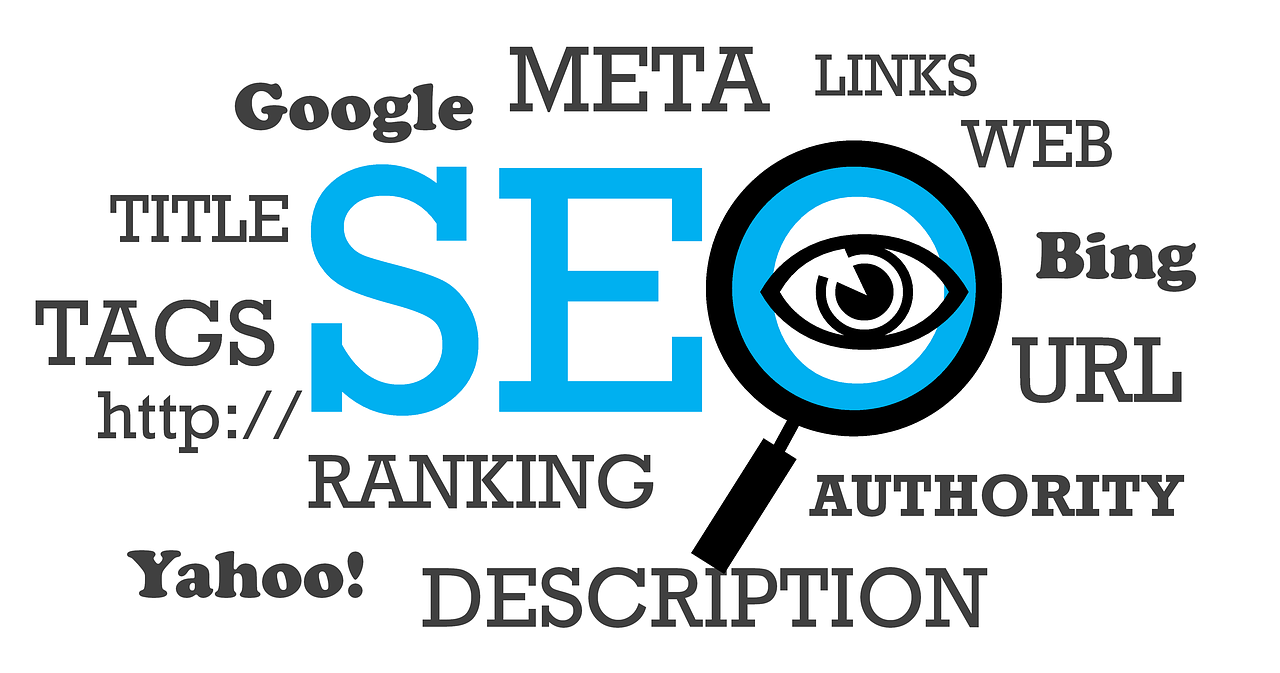This Article has been revised, edited and added to, by Poulomi Chakraborty.
In the competitive world of veterinary services, having a strong online presence is essential. When pet owners search for veterinarians or pet care advice, they often turn to search engines like Google. This is where Veterinary SEO comes into play. Veterinary SEO (Search Engine Optimization) is a set of strategies and techniques designed to improve your veterinary clinic’s visibility on search engines, helping you attract more clients and grow your practice.
In this comprehensive guide, we will walk you through each step of Veterinary SEO, from understanding its importance to implementing effective strategies. We’ll cover everything from optimizing your website and creating valuable content to leveraging social media and tracking your progress. By the end, you’ll have a clear roadmap for enhancing your online presence and attracting more pet owners to your clinic.
Understanding Veterinary SEO

Why Veterinary SEO Matters
The primary goal of Veterinary SEO is to make your clinic easily discoverable by potential clients. When someone searches for “veterinarian near me” or “pet care tips,” you want your website to appear at the top of the search results.
This visibility is crucial because the majority of search engine users rarely go beyond the first page of results. If your clinic isn’t on that first page, you’re missing out on a significant number of potential clients.
Veterinary SEO helps you reach a targeted audience – pet owners in your local area who are actively seeking veterinary services or information. By optimizing your online presence, you can connect with these individuals at the moment they need your services, increasing the likelihood of converting them into loyal clients.
Comparison: Traditional Marketing vs. Veterinary SEO
To understand the impact of Veterinary SEO, it’s helpful to compare it with traditional marketing methods. Traditional marketing techniques, such as print advertisements, billboards, and direct mail, have been used for decades to promote veterinary practices.
While these methods can still be effective, they often come with higher costs and limited reach.
Traditional marketing casts a wide net, targeting a broad audience, many of whom may not be actively seeking veterinary services. This approach can result in lower conversion rates and higher expenses.
For instance, a billboard advertisement may reach thousands of people, but only a small fraction of those viewers may be pet owners in need of veterinary care.
In contrast, Veterinary SEO targets specific search queries made by potential clients. This means you’re reaching an audience that is already interested in what you offer. For example, someone searching for “emergency vet clinic open late” is likely to need immediate veterinary care, making them a high-potential lead. By optimizing your website for these types of searches, you can attract more qualified traffic and achieve better conversion rates.
Additionally, Veterinary SEO is cost-effective. While it requires an initial investment of time and resources, the ongoing costs are relatively low compared to traditional marketing. Once your website is optimized and your content is published, you can continue to attract organic traffic without ongoing advertising expenses. This long-term approach can yield significant returns on investment, especially for small and medium-sized veterinary practices with limited marketing budgets.
How Search Engines Work
To effectively implement Veterinary SEO, it’s important to understand how search engines work. Search engines like Google use complex algorithms to index and rank websites based on various factors. These factors include the relevance and quality of content, website structure, user experience, and backlinks.
When a user enters a search query, the search engine scans its index to find the most relevant results. It then ranks these results based on their perceived value to the user. High-quality, relevant content that provides a good user experience is more likely to rank higher in the search results.
For veterinary clinics, this means that having a well-structured website with valuable content is essential. Your website should be easy to navigate, load quickly, and provide useful information about your services. Additionally, optimizing your content with relevant keywords and acquiring backlinks from reputable sources can further improve your search engine rankings.
Building a Solid Foundation: On-Page SEO

Optimizing Your Website Structure
The structure of your website plays a significant role in how search engines index and rank your pages. A well-organized site makes it easier for both users and search engines to find and understand your content. Start by ensuring that your website is user-friendly and intuitive.
Create a clear navigation menu that allows visitors to easily find information about your services, location, hours of operation, and contact details. Each page should be logically linked to others, forming a cohesive web of information.
For example, if you offer specialized services like dental care for pets, ensure there’s a dedicated page for this service linked from both the main services page and any relevant blog posts.
Importance of Mobile-Friendly Design
With a significant portion of internet traffic coming from mobile devices, having a mobile-friendly website is no longer optional. Google uses mobile-first indexing, meaning it primarily uses the mobile version of your site for ranking purposes.
Ensure that your website is responsive, meaning it adjusts seamlessly to different screen sizes and provides a great user experience on all devices.
Check that buttons and links are easy to click on a small screen, text is readable without zooming, and pages load quickly. Tools like Google’s Mobile-Friendly Test can help you identify and fix issues that may affect your mobile usability.
Keyword Research for Veterinary SEO
Effective keyword research is the cornerstone of Veterinary SEO. Keywords are the terms that potential clients use to search for information or services online. To attract the right audience, you need to identify and target the keywords most relevant to your practice.
Start with broad terms related to veterinary care, then narrow down to more specific phrases that reflect the services you offer. Tools like Google Keyword Planner, Ahrefs, and SEMrush can help you find keywords with a good balance of search volume and competition.
For example, a general keyword might be “veterinary clinic,” but a more targeted long-tail keyword could be “affordable veterinary clinic in [Your City].” Long-tail keywords often have lower competition and attract more qualified traffic.
Creating High-Quality Content
Content is king in SEO. High-quality, relevant content not only attracts visitors but also helps improve your search engine rankings. Focus on creating content that addresses the needs and concerns of pet owners. This could include blog posts, service pages, FAQs, and informative articles.
When creating content, incorporate your target keywords naturally. Avoid keyword stuffing, as it can negatively impact user experience and search engine rankings. Instead, aim for a conversational tone that engages readers and provides value.
For instance, if you’re targeting the keyword “emergency vet services,” you could write a blog post titled “What to Do in a Pet Emergency: Essential Tips from Our Emergency Vet.” In this post, provide detailed information on common pet emergencies, what steps pet owners should take, and how your clinic can help.
Optimizing On-Page Elements
On-page SEO involves optimizing individual pages to improve their search engine rankings. Key elements to focus on include title tags, meta descriptions, headers, and image alt text.
Title tags should be concise and include your primary keyword. For example, “Emergency Vet Services in [Your City] | [Your Clinic Name]” is a clear, keyword-rich title. Meta descriptions, while not directly impacting rankings, influence click-through rates. Write compelling meta descriptions that include relevant keywords and entice users to click on your link.
Headers (H1, H2, H3) help organize your content and make it easier for search engines to understand its structure. Use your keywords in these headers to signal the relevance of your content. For example, an H1 header might be “Comprehensive Veterinary Services in [Your City],” while H2 headers could break down specific services like “Preventative Care” or “Surgical Services.”
Image optimization is often overlooked but crucial. Use descriptive file names and alt text for images to improve accessibility and SEO. For instance, instead of naming an image “IMG1234.jpg,” use a descriptive name like “happy-dog-after-veterinary-visit.jpg” and include alt text like “A happy dog after a check-up at our veterinary clinic in [Your City].”
Off-Page SEO Strategies

Building High-Quality Backlinks
Backlinks, or inbound links, are links from other websites to your site. They are a critical factor in SEO because they signal to search engines that your content is valuable and trustworthy. The more high-quality backlinks you have, the higher your site is likely to rank in search results.
To build high-quality backlinks, start by creating content that other websites would want to link to. This could be informative blog posts, research studies, infographics, or comprehensive guides. Reach out to local pet blogs, animal shelters, and other relevant websites to share your content and ask for backlinks.
For example, if you write a detailed guide on “Caring for Senior Pets,” reach out to senior pet care forums or blogs and offer to share your guide with their audience. You could also collaborate with local pet stores or animal rescue organizations for cross-promotion, which can result in mutually beneficial backlinks.
Leveraging Local SEO
For veterinary practices, local SEO is crucial. Pet owners typically search for veterinarians within their local area, so optimizing for local search is essential. Start by claiming and optimizing your Google My Business (GMB) listing. Ensure that your GMB profile is complete with your clinic’s name, address, phone number, business hours, and services offered.
Encourage satisfied clients to leave positive reviews on your GMB profile, as reviews are a significant factor in local search rankings. Respond to reviews promptly, whether they are positive or negative, to show that you value client feedback and are committed to providing excellent service.
Include local keywords in your website content and meta tags. For example, use phrases like “veterinary clinic in [Your City]” or “pet care services near [Neighborhood].” Additionally, create location-specific pages on your website if you have multiple branches, providing detailed information about each location.
Engaging on Social Media
Social media is a powerful tool for building your online presence and engaging with your community. Platforms like Facebook, Instagram, and Twitter allow you to connect with pet owners, share valuable content, and promote your services.
Regularly post engaging content that showcases your expertise and the personality of your clinic. This could include pet care tips, success stories, behind-the-scenes looks at your clinic, or promotions for your services. Use hashtags relevant to your industry and location to increase your reach.
For example, you could post a series of “Pet of the Week” features, highlighting a different patient each week with a photo and a brief story about their visit. Encourage your followers to share these posts and tag friends who might be interested, expanding your reach organically.
Creating Local Partnerships
Forming partnerships with other local businesses can enhance your visibility and attract more clients. Consider collaborating with pet stores, grooming salons, animal shelters, and dog trainers. These partnerships can involve cross-promotions, joint events, or shared content.
For instance, you could partner with a local pet store to host a pet health workshop. Promote the event on both your websites and social media channels, and provide attendees with valuable information and exclusive offers. These collaborations can help you reach a wider audience and build strong community ties.
Online Directories and Citations
Listing your veterinary clinic in online directories can improve your local SEO and make it easier for potential clients to find you. Ensure that your business is listed on major directories like Yelp, Yellow Pages, and local business directories specific to your area.
Consistency is key when it comes to online citations. Make sure that your business name, address, and phone number (NAP) are consistent across all directories and listings. Inconsistent information can confuse search engines and harm your local search rankings.
Monitor your listings regularly to ensure that all information remains accurate and up-to-date. If you move to a new location or change your business hours, update your listings promptly to reflect these changes.
Utilizing Content Marketing
Content marketing involves creating and sharing valuable content to attract and engage your target audience. For veterinary practices, this could include blog posts, articles, videos, and infographics that provide useful information to pet owners.
Identify common questions and concerns that pet owners have and create content that addresses these topics. For example, write blog posts on subjects like “How to Prevent Fleas and Ticks in Dogs,” “The Importance of Annual Vaccinations,” or “Tips for Caring for a New Kitten.”
Share this content on your website, social media channels, and email newsletters to reach a broader audience. High-quality content can also attract backlinks from other websites, further boosting your SEO efforts.

Creating and Optimizing Content for Veterinary SEO
Developing a Content Strategy
A well-defined content strategy is essential for Veterinary SEO. Start by identifying the topics that are most relevant to your audience and align with your business goals. Consider the common questions and concerns pet owners have and create content that addresses these issues.
Outline a content calendar that details what content you will produce, when it will be published, and where it will be shared. Consistency is key in content marketing, so aim to publish new content regularly, whether it’s weekly blog posts, monthly newsletters, or quarterly guides.
Writing Engaging Blog Posts
Blog posts are a great way to attract and engage your audience while improving your SEO. Focus on writing content that is informative, engaging, and tailored to your target audience. Use a conversational tone to make your blog posts relatable and easy to read.
When choosing topics, think about the specific needs of pet owners. For example, you could write about seasonal pet care tips, like “How to Keep Your Pet Safe During Summer Heat” or “Winter Care Tips for Dogs.” Use your keyword research to naturally incorporate relevant keywords into your blog posts, but avoid keyword stuffing.
Break up your content with subheadings, images, and bullet points to make it more digestible. Include a call to action (CTA) at the end of each post to encourage readers to take the next step, whether that’s booking an appointment, signing up for your newsletter, or following you on social media.
Creating Informative Service Pages
Service pages are critical for informing potential clients about what your clinic offers and for ranking in search engines. Each service page should be comprehensive, detailing what the service entails, its benefits, and any other relevant information.
For example, a service page on “Pet Dental Care” could cover topics like the importance of dental health, common dental issues in pets, and what a dental check-up at your clinic involves. Use relevant keywords in the title, headers, and throughout the content to optimize these pages for search engines.
Include high-quality images and videos to enhance the content. Visual elements can help explain procedures and make the page more engaging. Ensure that each service page has a clear CTA, such as “Schedule a Dental Check-Up Today” or “Contact Us for More Information.”
Producing Engaging Videos
Video content is highly effective for engaging audiences and boosting SEO. Videos can help explain complex topics, showcase your clinic, and build trust with potential clients. Create videos that address common pet care questions, demonstrate procedures, or introduce your team.
For example, you could produce a series of “How-To” videos, such as “How to Brush Your Dog’s Teeth” or “How to Administer Medication to Your Cat.” These videos can be shared on your website, YouTube, and social media channels to reach a wider audience.
Optimize your videos by including relevant keywords in the title, description, and tags. Add subtitles and transcripts to make your videos more accessible and improve their SEO value. Encourage viewers to subscribe to your YouTube channel or visit your website for more information.
Utilizing Infographics
Infographics are an excellent way to present information visually and can be highly shareable on social media. They can simplify complex information and make it more engaging. Create infographics on topics like “Common Pet Health Myths,” “Signs of a Healthy Pet,” or “Pet Emergency Checklist.”
Design your infographics with your brand’s colors and style to maintain consistency. Include your clinic’s logo and website URL on each infographic to drive traffic back to your site. Share these infographics on your blog, social media, and other platforms to increase their reach.
Writing Detailed Guides and Ebooks
Comprehensive guides and ebooks can establish your clinic as an authority in the veterinary field. These in-depth resources provide valuable information to pet owners and can be used to capture leads by offering them in exchange for contact information.
For example, create a guide titled “The Ultimate Guide to Puppy Care,” covering everything from choosing the right breed to training tips and health care. Offer this guide as a downloadable PDF on your website, requiring visitors to enter their email address to access it.
Promote your guides and ebooks through your blog, social media, and email marketing to attract downloads and build your email list. Follow up with these leads through targeted email campaigns to nurture them into clients.
Optimizing for Voice Search
With the rise of smart speakers and voice-activated assistants, optimizing for voice search is becoming increasingly important. Voice searches tend to be more conversational and question-based, so focus on long-tail keywords and natural language.
Include question phrases in your content, such as “What should I feed my puppy?” or “How often should my cat see a vet?” Create FAQ pages that directly answer these questions in a concise and informative manner.
Ensure that your content is easily readable and scannable, as voice search often pulls answers from the first few sentences of a page. Optimize your local SEO, as many voice searches are location-based, such as “veterinarian near me.”
Tracking and Analyzing Your SEO Efforts

Setting Up Google Analytics
Google Analytics is an essential tool for tracking and analyzing the performance of your Veterinary SEO efforts. It provides detailed insights into how visitors find and interact with your website, allowing you to make data-driven decisions to improve your SEO strategy.
Start by setting up a Google Analytics account and linking it to your website. This involves adding a tracking code to your site, which allows Google to collect data about your visitors. Once set up, you can access a wealth of information about your website’s traffic, including the number of visitors, their geographic location, the devices they use, and how they navigate your site.
Monitoring Key Metrics
To gauge the effectiveness of your SEO efforts, focus on monitoring key metrics that reflect your website’s performance. These include:
- Organic Traffic: This is the number of visitors who find your site through search engines. An increase in organic traffic indicates that your SEO efforts are paying off.
- Bounce Rate: This measures the percentage of visitors who leave your site after viewing only one page. A high bounce rate may suggest that your content isn’t meeting visitors’ expectations or that your site’s user experience needs improvement.
- Average Session Duration: This indicates how long visitors stay on your site. Longer sessions suggest that your content is engaging and valuable.
- Pages per Session: This metric shows how many pages a visitor views during a single session. Higher numbers can indicate better site navigation and more engaging content.
- Conversion Rate: This measures the percentage of visitors who take a desired action, such as booking an appointment or signing up for a newsletter. A higher conversion rate reflects the effectiveness of your calls to action and overall site design.
Using Google Search Console
Google Search Console is another vital tool for monitoring your SEO performance. It provides insights into how your site appears in Google search results and alerts you to any issues that might affect your rankings.
Set up Google Search Console and link it to your website. This tool allows you to see which keywords are driving traffic to your site, how your pages are performing in search results, and any errors or issues that need addressing.
For instance, if you notice that a particular page has a high click-through rate (CTR) but a low average position, it might indicate that the page’s meta tags are compelling, but the content needs optimization to rank higher. Use these insights to refine your SEO strategy and improve your site’s performance.
Conducting Regular SEO Audits
Regular SEO audits are essential for maintaining and improving your website’s search engine rankings. An SEO audit involves reviewing your site’s technical aspects, on-page elements, and overall content strategy to identify areas for improvement.
Use tools like SEMrush, Ahrefs, or Moz to conduct comprehensive SEO audits. Check for issues such as broken links, duplicate content, missing meta tags, and slow page load speeds. These tools can also help you analyze your keyword usage, backlink profile, and site structure.
Address any issues identified during the audit to ensure that your site remains optimized and competitive. Regular audits help you stay on top of changes in search engine algorithms and ensure that your SEO efforts continue to deliver results.
Analyzing Competitor Performance
Analyzing your competitors’ performance can provide valuable insights into your own SEO strategy. Use tools like SEMrush, Ahrefs, or Moz to identify your main competitors and analyze their keyword rankings, backlink profiles, and content strategies.
Look for gaps in your competitors’ strategies that you can exploit. For example, if a competitor ranks well for a particular keyword but has less comprehensive content, you can create a more detailed and valuable resource to outrank them.
Additionally, identify which keywords and content types are driving the most traffic to your competitors’ sites. Use this information to inform your own content strategy and target similar keywords to attract more traffic.
Adjusting Your Strategy Based on Insights
SEO is an ongoing process that requires continuous adjustment and refinement. Use the insights gained from Google Analytics, Google Search Console, SEO audits, and competitor analysis to make data-driven decisions.
For example, if you notice that certain blog posts are driving significant traffic but have high bounce rates, consider updating the content to make it more engaging and relevant. Add more internal links to guide visitors to other pages on your site, improving the overall user experience.
If you find that specific keywords are performing well, consider creating more content around those topics. Conversely, if certain keywords are not driving the expected traffic, refine your content or target different keywords.
Staying Informed About SEO Trends
The field of SEO is constantly evolving, with new trends and algorithm updates emerging regularly. Staying informed about these changes is crucial for maintaining your website’s performance and competitiveness.
Follow industry blogs, participate in webinars, attend SEO conferences, and join online communities to stay up-to-date with the latest developments. Engage with other SEO professionals to share insights and learn from their experiences.
By staying informed and adaptable, you can ensure that your Veterinary SEO strategy remains effective and continues to deliver results. Regularly update and optimize your content, monitor your performance, and adjust your strategy based on data and industry trends.
Enhancing User Experience (UX) for Better SEO

Importance of User Experience in SEO
User experience (UX) is a critical component of SEO. Search engines like Google prioritize websites that offer a positive user experience. A well-designed, user-friendly website not only keeps visitors engaged but also signals to search engines that your site is valuable and worth ranking higher in search results.
Several UX factors influence SEO, including page load speed, mobile-friendliness, site navigation, and content accessibility. Improving these aspects can enhance your site’s performance, reduce bounce rates, and increase the time users spend on your site, all of which contribute to better search engine rankings.
Improving Page Load Speed
Page load speed is one of the most important factors in user experience. Slow-loading pages can frustrate visitors and lead to higher bounce rates. Google also considers page load speed as a ranking factor, so optimizing it is essential for SEO.
To improve page load speed, start by optimizing your images. Use compressed image formats like JPEG for photographs and PNG for graphics with transparent backgrounds. Tools like TinyPNG and ImageOptim can help reduce image file sizes without compromising quality.
Minimize the use of large scripts and unnecessary plugins, as these can slow down your site. Enable browser caching to store static files on users’ devices, reducing load times for repeat visitors. Tools like Google PageSpeed Insights can help you identify specific issues affecting your page load speed and provide recommendations for improvement.
Ensuring Mobile-Friendliness
With a significant portion of web traffic coming from mobile devices, ensuring your website is mobile-friendly is crucial. Google’s mobile-first indexing means that the mobile version of your site is considered the primary version for ranking purposes.
Make sure your website uses a responsive design that adjusts seamlessly to different screen sizes. Test your site on various mobile devices to ensure it provides a smooth and intuitive experience. Use larger buttons and touch-friendly navigation elements to enhance usability on smaller screens.
Tools like Google’s Mobile-Friendly Test can help you identify issues and provide suggestions for improving your site’s mobile experience. Ensuring your site is mobile-friendly not only improves user experience but also boosts your SEO performance.
Enhancing Site Navigation
Clear and intuitive site navigation is essential for both user experience and SEO. Visitors should be able to find the information they need quickly and easily. A well-structured navigation menu helps users explore your site and discover more content, reducing bounce rates and increasing engagement.
Organize your site’s content into logical categories and use descriptive labels for your navigation links. Include a search bar to help users find specific information quickly. Breadcrumbs can also improve navigation by showing users their location within your site’s hierarchy.
Internal linking is another important aspect of site navigation. Link related pages and posts within your content to guide users through your site and keep them engaged. This not only enhances user experience but also helps search engines understand the structure of your site and index your content more effectively.
Creating Accessible Content
Accessibility is a crucial aspect of user experience that ensures all users, including those with disabilities, can access and interact with your content. Creating accessible content not only improves UX but also enhances your SEO by making your site more inclusive and user-friendly.
Use descriptive alt text for images to help visually impaired users understand the content. Ensure your site’s text is readable by using a clear font and sufficient contrast between text and background. Provide transcripts for video and audio content to accommodate users with hearing impairments.
Implement proper heading structures (H1, H2, H3) to organize your content and make it easier to navigate. Use semantic HTML elements to improve the accessibility and search engine readability of your content. Tools like WAVE and Axe can help you identify accessibility issues and provide recommendations for improvement.
Reducing Bounce Rates
Bounce rate is the percentage of visitors who leave your site after viewing only one page. A high bounce rate can indicate that your site isn’t meeting users’ expectations or providing a good user experience. Reducing bounce rates is crucial for improving user engagement and SEO.
To reduce bounce rates, ensure that your content is relevant, engaging, and easy to read. Use clear and compelling headlines to grab users’ attention and make your content scannable with subheadings, bullet points, and short paragraphs.
Incorporate multimedia elements like images, videos, and infographics to make your content more engaging. Ensure that your site loads quickly and is free from intrusive pop-ups and ads that can frustrate users. Provide clear calls to action to guide users to other relevant pages and encourage further interaction with your site.
Encouraging User Interaction
Encouraging user interaction can enhance user experience and improve your SEO performance. Engaged users are more likely to spend time on your site, explore multiple pages, and take desired actions, such as booking an appointment or signing up for a newsletter.
Include interactive elements like comment sections, polls, and quizzes to encourage users to engage with your content. Respond to comments and questions promptly to build a sense of community and trust.
Social sharing buttons can also promote user interaction by making it easy for visitors to share your content on their social media channels. Encouraging social sharing can increase your content’s reach and attract more traffic to your site.
Conclusion
Implementing Veterinary SEO is essential for attracting more clients and growing your veterinary practice. By optimizing your website, creating valuable content, and enhancing user experience, you can improve your search engine rankings and reach a broader audience. Focus on building high-quality backlinks, leveraging local SEO, and engaging with your community through social media and partnerships.
Regularly track and analyze your SEO efforts to make data-driven adjustments and stay ahead of the competition. With a well-executed SEO strategy, your veterinary clinic can achieve sustained success and connect with more pet owners in need of your services. By prioritizing both user experience and search engine optimization, you’ll create a valuable online presence that benefits both your practice and your clients.
READ NEXT:
- Mobile App SEO for Tech Startups: App Store Optimization and Beyond
- The Role of Keywords in Medical and Healthcare SEO
- Leveraging Core Web Vitals for B2C SEO
- User-Generated Content: A Boon or a Bane?
- NAP Citations and Why They Matter for Local Healthcare SEO





















Comments are closed.